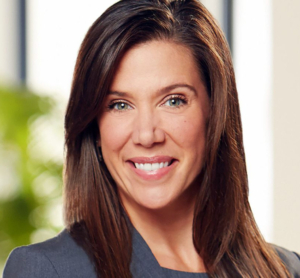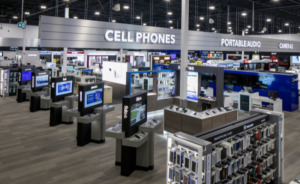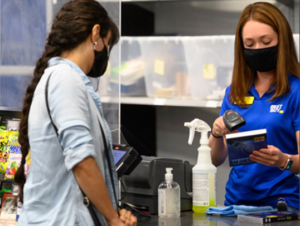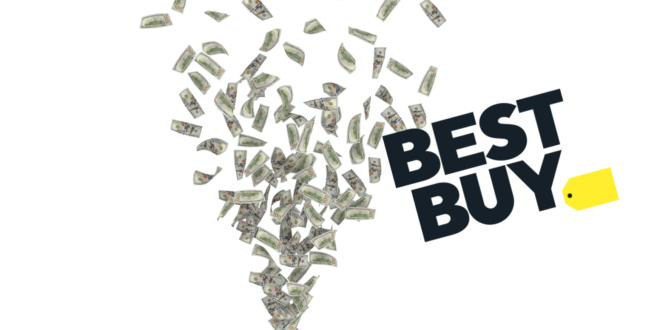By Jeff Domansky, May 18, 2021
At the Consumer Electronics Show 2021, Best Buy CEO Corie Barry summed up the future of retail succinctly: “There isn’t a world where people revert back to their 2019 behaviors, and part of that is just a comfort level,” Barry said.
The implications for the payments industry are obvious. If the shopper’s journey and shopping habits change dramatically, payments will likely change just as quickly.
Three sudden Covid impacts on Best Buy’s business

In her keynote at CES, Barry talked about the pandemic and its three sudden impacts on the company business.
She said, “The company’s hypothesis around enriching lives through technology became the instant reality for every single person.” That included overnight changes in everything from working from home, how we all shopped and banked, distance learning, and more.
The way the company planned to meet these needs changed overnight as well. Best Buy noted customers moved immediately to digital services, and within just three weeks, the retailer implemented curbside pickup.
Imagine what it takes to roll that out in such a short timeframe, at more than 1,200 Best Buy stores, during the height of the pandemic?
The third sudden impact was that employees needed to work differently immediately. Before the pandemic, employees had strict roles, a familiar structure, and they worked in narrow product specialties. “Overnight, because we switched to a curbside model, everybody was just pitching in just to get the gear to the customer, the way they [i.e., the customer] wanted,” Barry said.
“The most important thing is that each of those things has remained true since literally those early hours since we shifted our operating model. They’ve, in fact, just grown in terms of their importance.”
Reopening stores grew business even faster
Because of those pandemic impacts, Barry said Best Buy’s business rocketed even faster when the company cautiously reopened stores in June. “Immediately, we saw that business ramped and ramped up at levels we had never seen before. When you have that demand-supply imbalance, you just can’t keep up with it. You literally couldn’t manufacture fast enough to keep up with it.”
She said nobody could have predicted the massive demand for webcams, as an example. But it wasn’t just the “things,” it was the challenge of providing even bigger solutions for what the consumer was facing, including the jump in demand for home entertainment as well.
Hybrid grew critically important

Barry said even as online sales jumped 175% in Q3 2020, the company noticed consumers still picked up 40% of purchases in-store or curbside. She said the company realized the importance of putting the consumer and their needs in control and had a longer-term strategy to do that through several channels.
“What we thought might take 3 to 5 years to penetrate, this happened overnight. All of the supply chain investments we’d been putting in for literally four years, we flexed all of that up to meet the large-scale demand. But what we also did, was we put the customer in control,” she said.
She said the company realized it didn’t matter whether the customer wanted products at their couch, at curbside, or at the counter. What mattered was being able to meet the customer where they are. “That’s going to be the future of retailing, for sure, in the future,” Barry emphasized.
Moderator Alan Murray, President, and CEO of Fortune Media, made an interesting observation. “It’s kind of like the pandemic caused risk aversion to evaporate because risk became something out there. We knew what risk was. It was the coronavirus, and everything else was unified in trying to figure out the solutions,” he said. “It was an amazingly innovative period because it was an amazingly tough period.”
Barry said the other important takeaway was the need to listen carefully to customers and “iterate” and innovate constantly. In the future, she noted stores would have an even more important role in fulfillment and continue to provide a valuable customer experience in the store.
In Best Buy’s case, Barry said the store would continue to play a critical role in customer support, as a resource, and as a solutions provider. “Our stores play a very vital role in that, and that is a very hands-on experience.”
What’s ahead for retail?
Moderator Murray asked Barry for her thoughts on what lies ahead for retailers. Will sales continue to grow, will they drop, will technology continue to accelerate change?

She said once the consumer has a great experience with a new approach or new service level, the pressure is on other retailers to respond to those expectations. “Customer expectations will be raised as to what they can get done digitally, but importantly in whatever way they want.”
Curbside is an excellent example of sudden impact, she said. Telehealth is another example where Best Buy had promoted the concept and products with limited success for years. “Overnight, because it was required, you had a much deeper penetration and understanding by people of how to use telehealth,” said Barry.
That is undoubtedly a critical message for payments and fintech innovations like contactless, digital wallets, real-time payments, cross-border payments, and digital invoicing and accounts receivable management.
Will financial services providers iterate and innovate fast enough? Can we keep up with the demand for digital innovation when surrounded by disruptors and agile competitors? Listening to customers and customer demand will drive innovation in payments and financial services.
You can listen to the full interview of Best Buy CEO Corie Barry by Alan Murray from CES 2021 here or in the video below with additional insights on leadership and the importance of diversity in business.
Google: Four insights for retail’s future
The Think with Google newsletter served up four persistent purchasing insights worth noting:

- Dynamic demand: People’s buying patterns continue to change as they adapt to unpredictability.
- Digital inspiration: People will continue to look for ideas and shopping inspiration online. For example, 81% of consumers said they discovered new brands online during the pandemic.
- Counting on convenience: People will continue to shop in new ways, with a focus on convenience.
- Supportive spending: People will continue to be more discerning about how and where they spend their dollars.
“Whether someone is choosing to buy an electric car to do her part for the environment or directing her $5 towards a Black-owned coffee shop, consumers will more actively shop their values,” said Kate Stanford, Managing Director, Ads Marketing.
That same perspective is playing out in payments worldwide as well.
Other related PaymentsNEXT coverage includes:
As technocracy pillages payments, banks must prioritize responsible fintech
$4.2 trillion projected for global e-commerce in 2021
Changes brewing for retailers at point-of-sale

